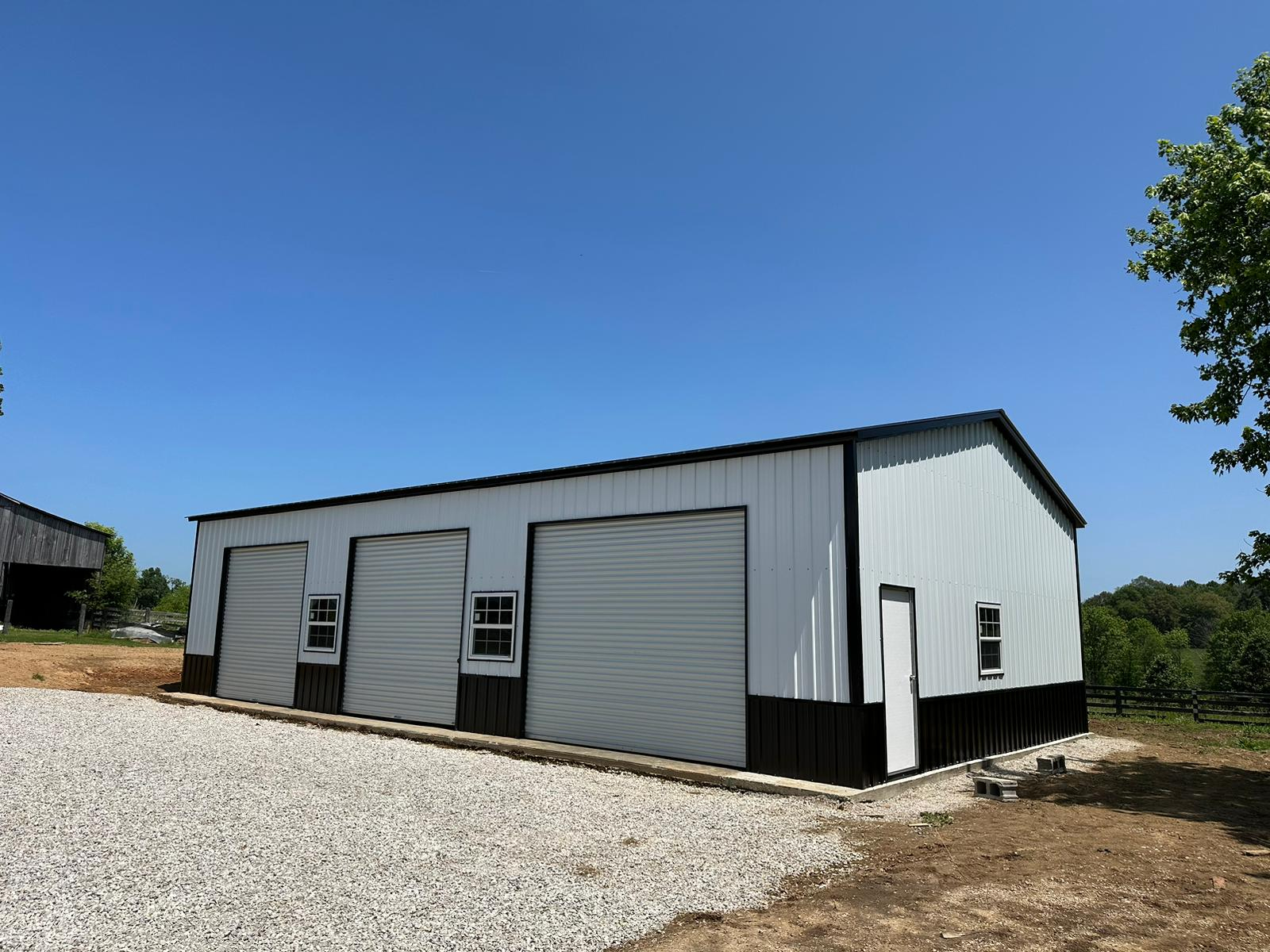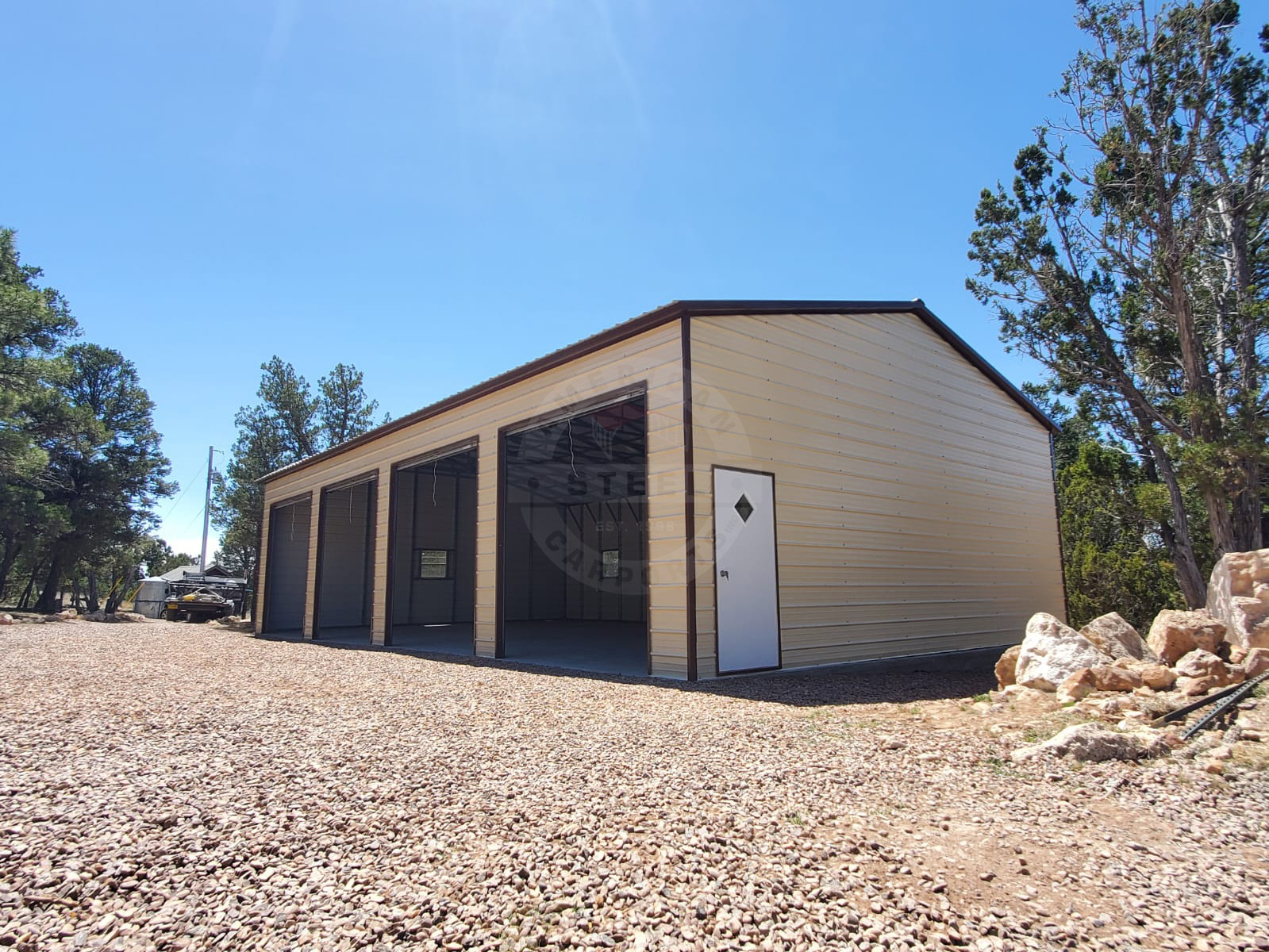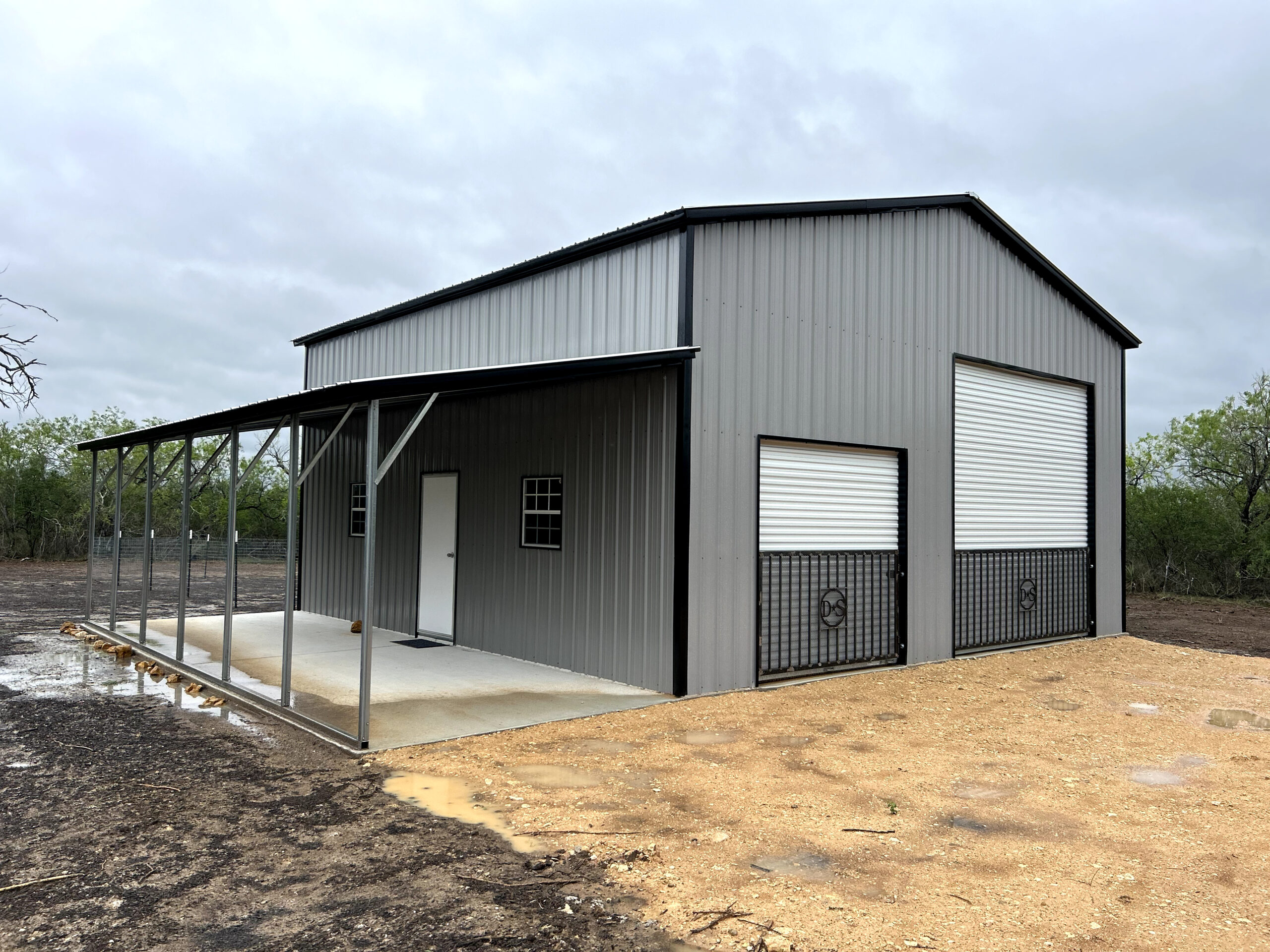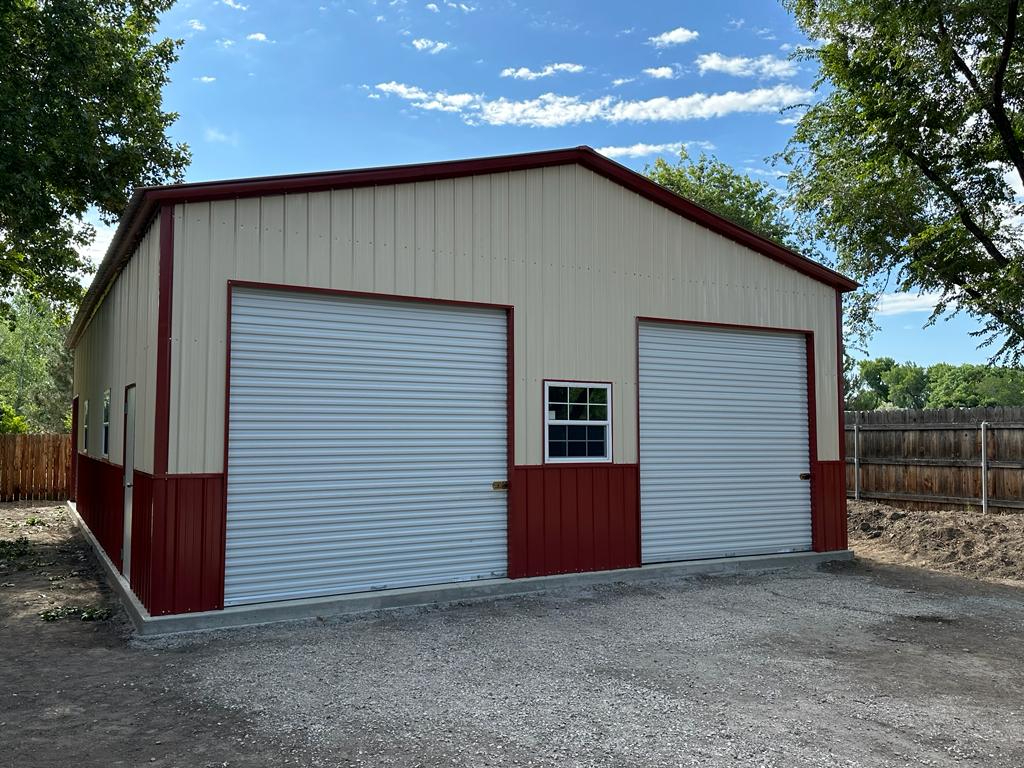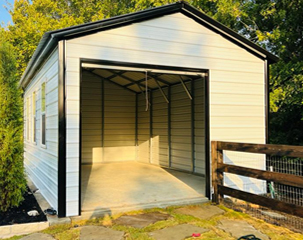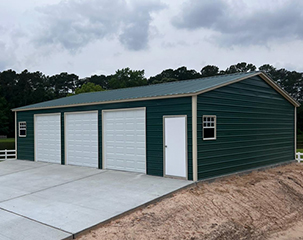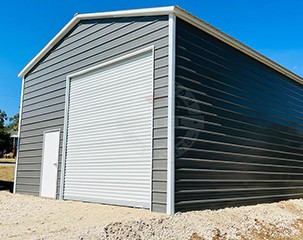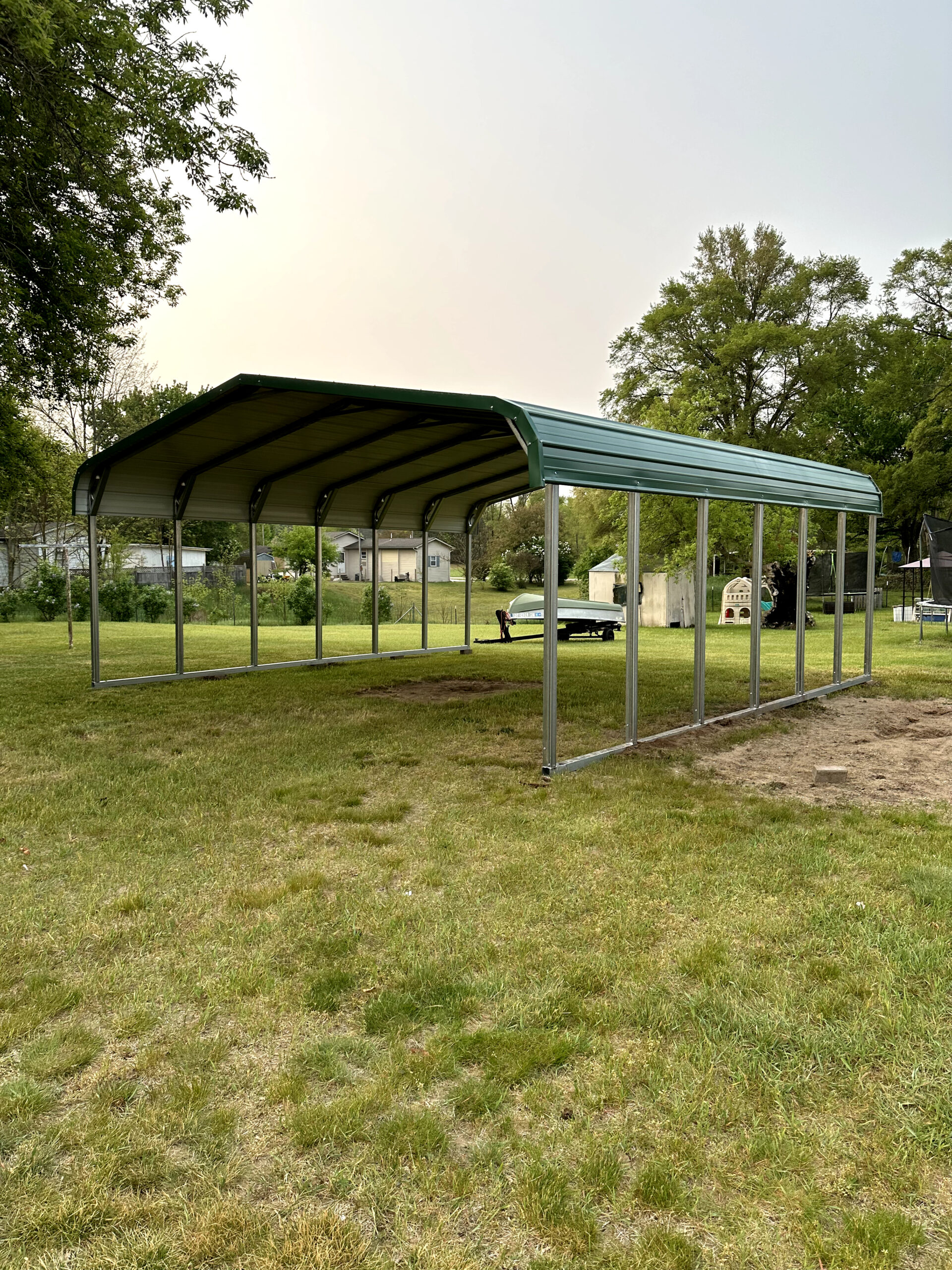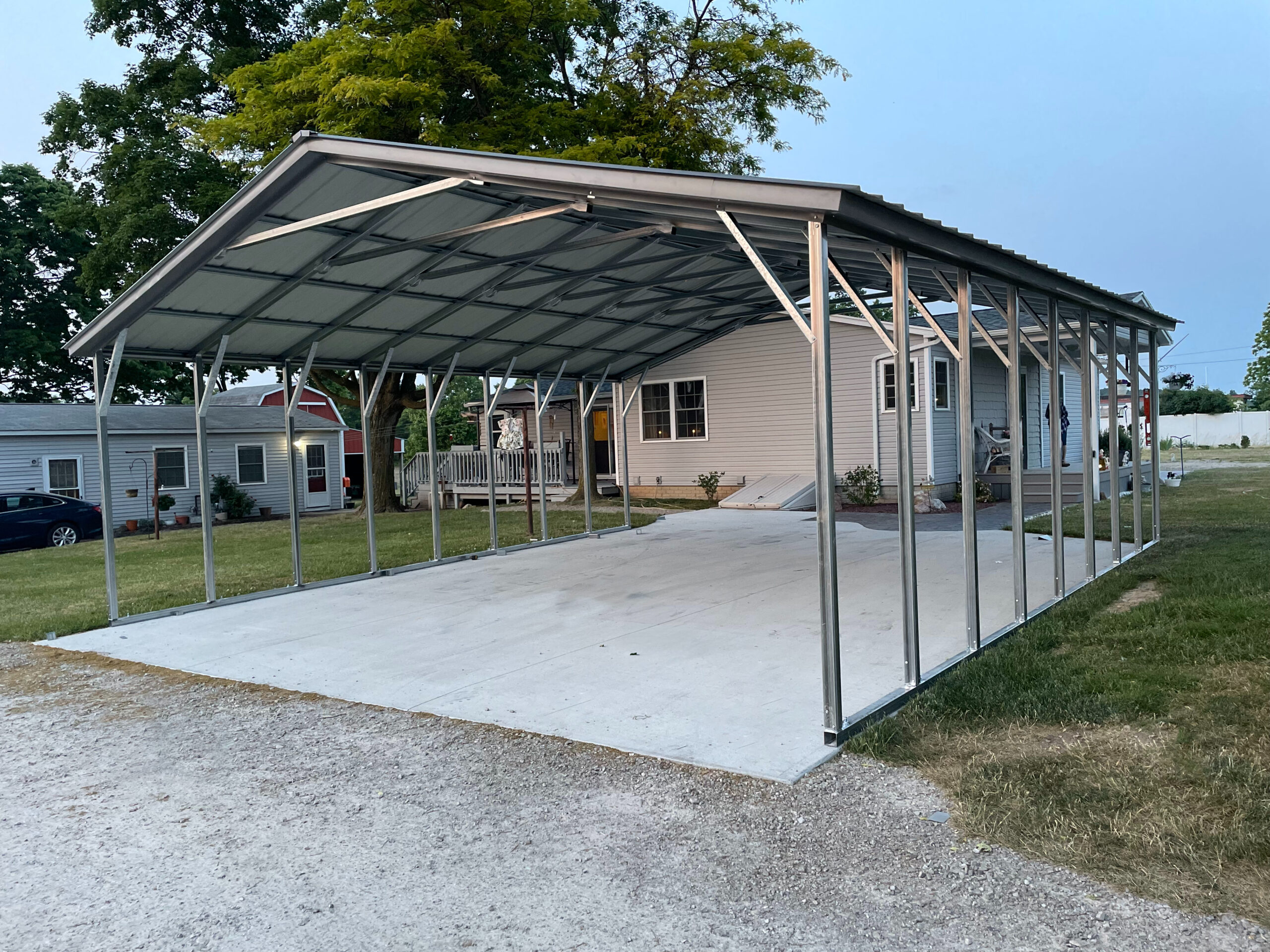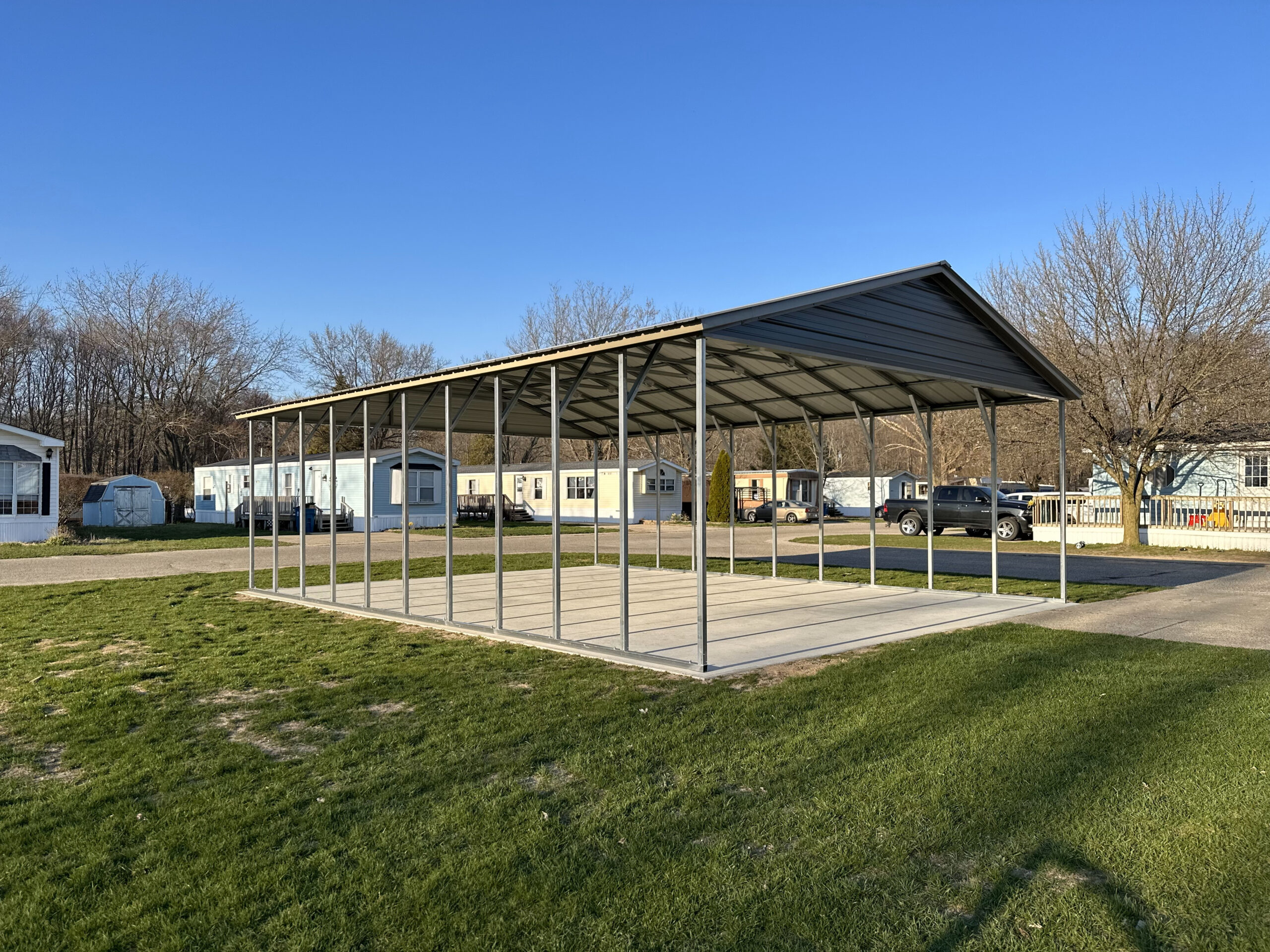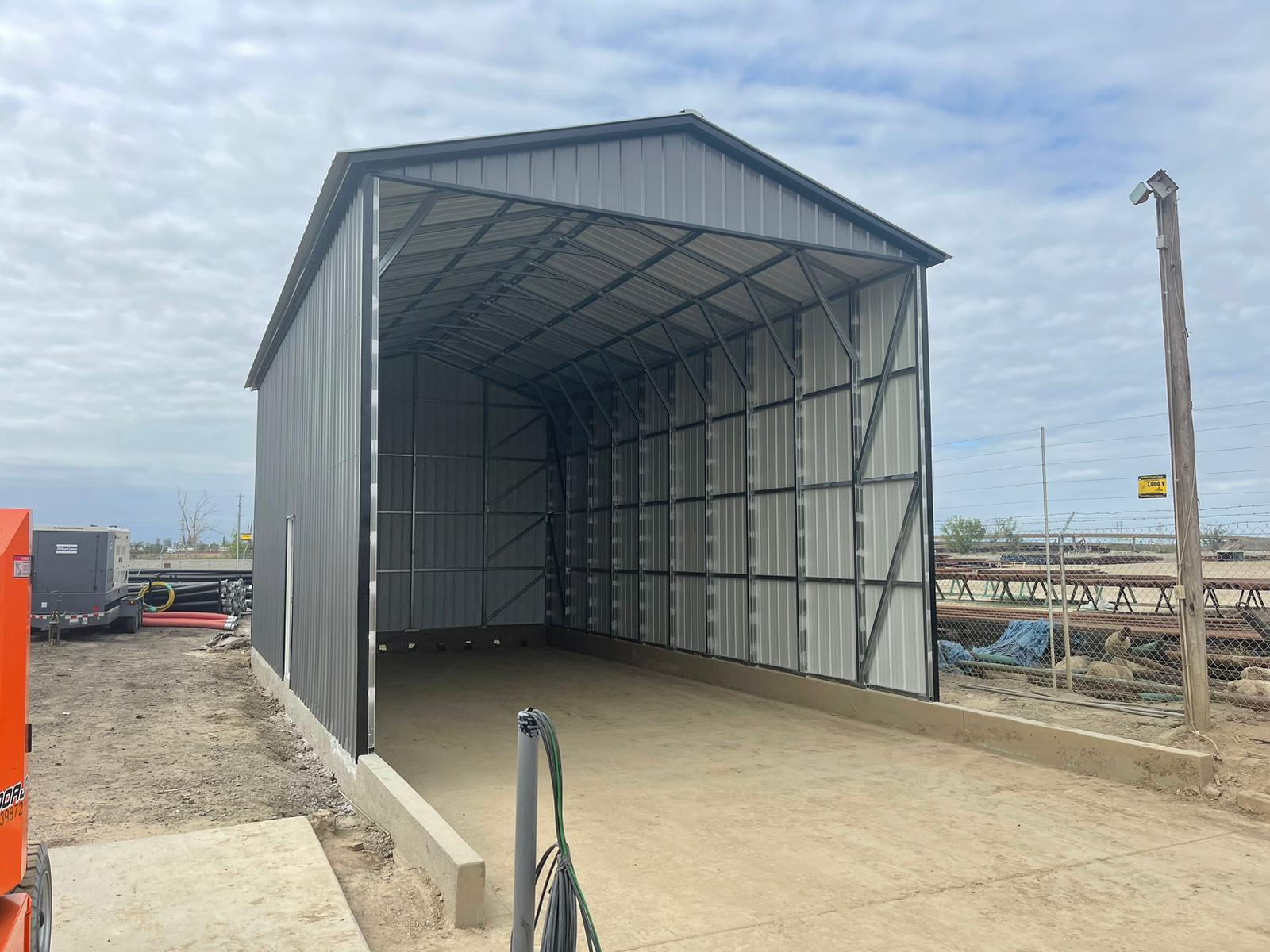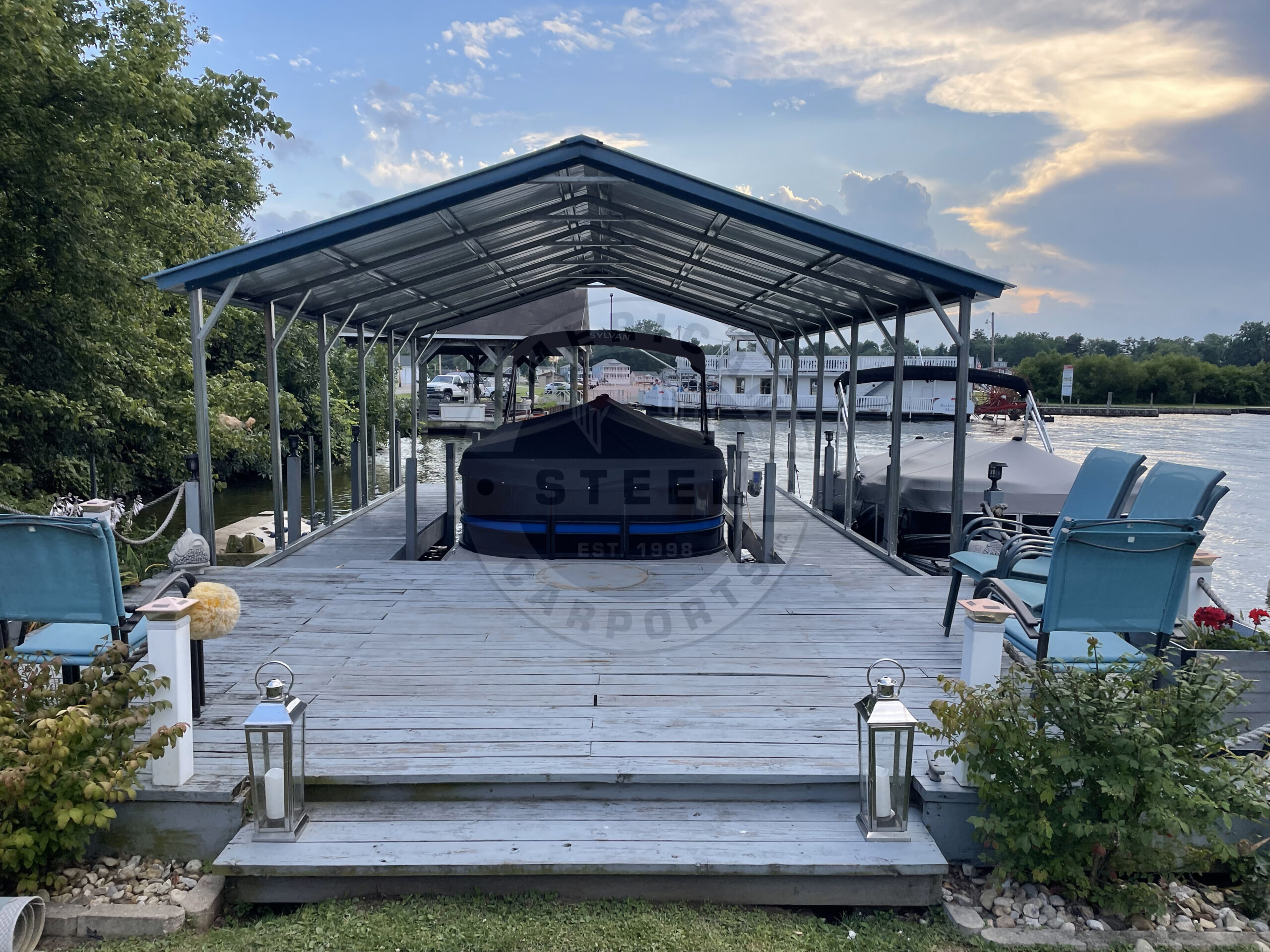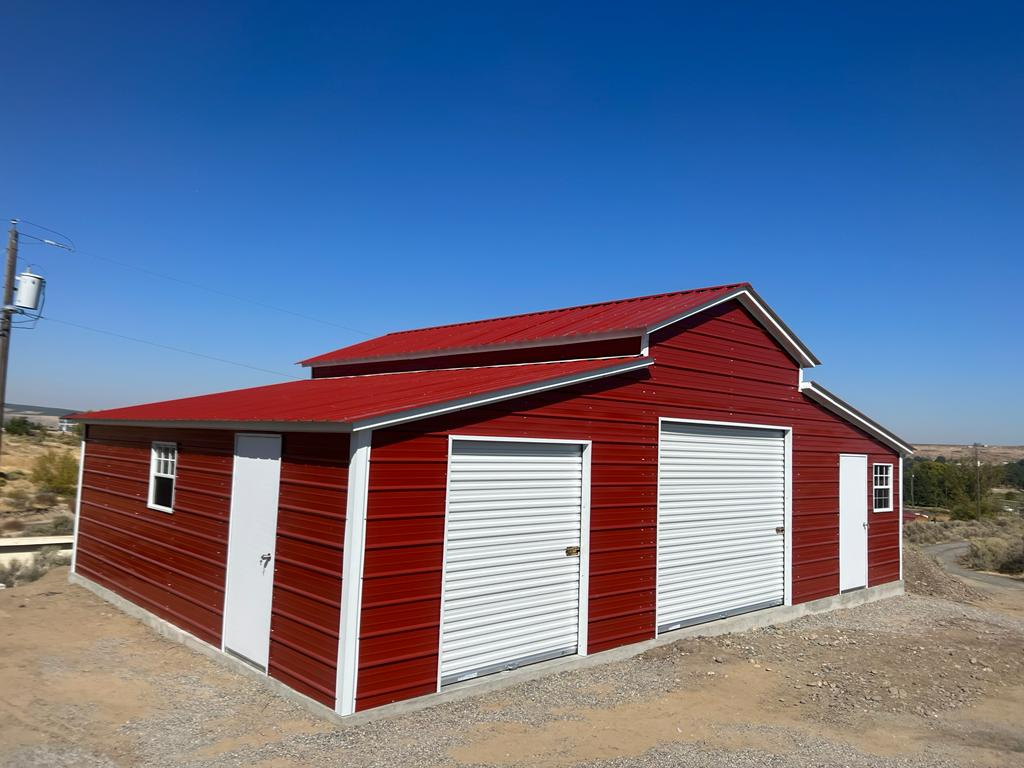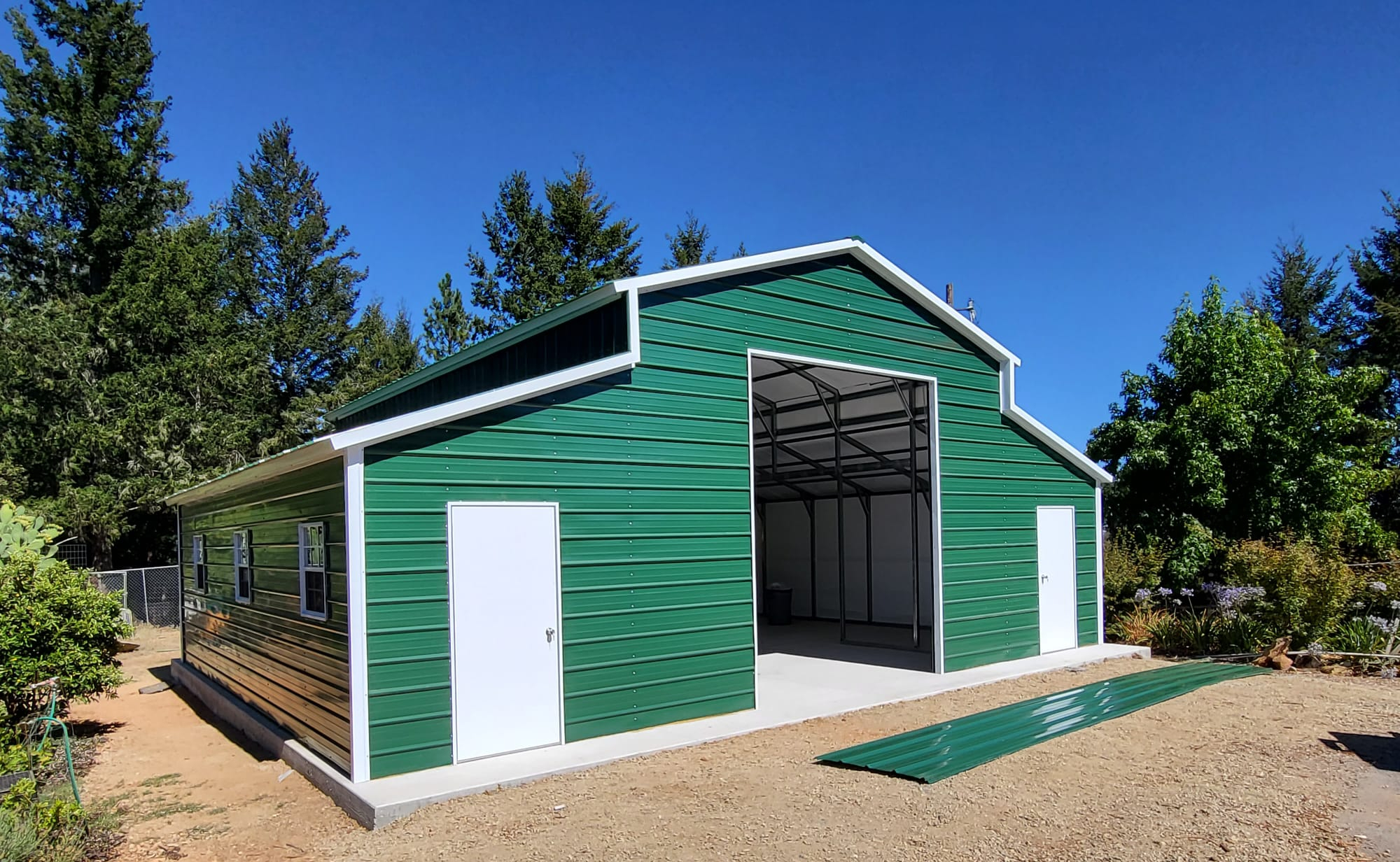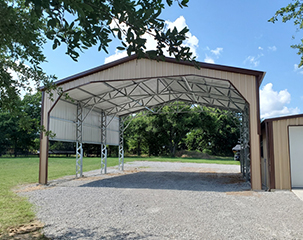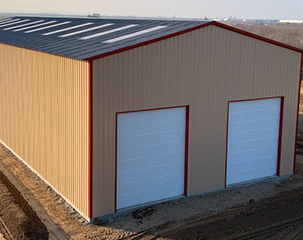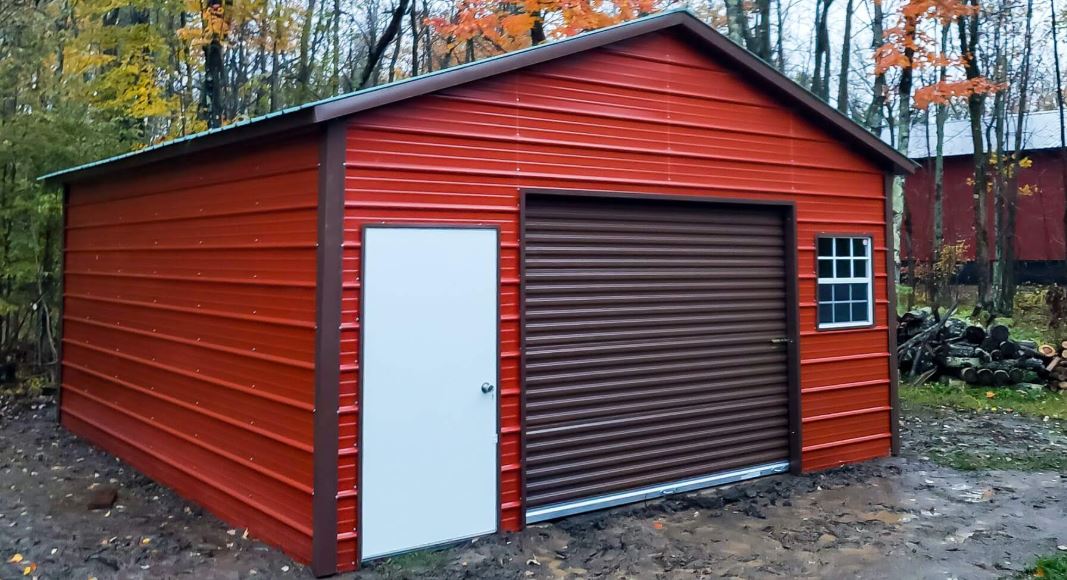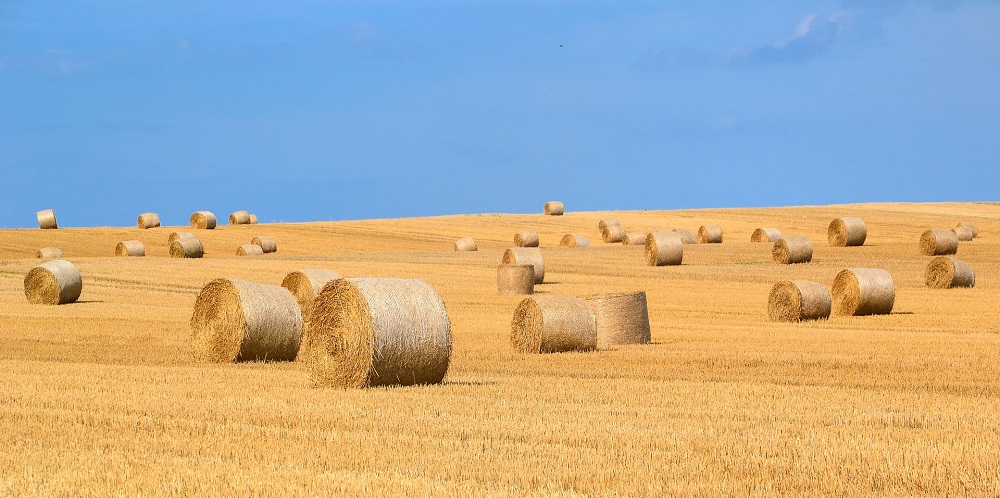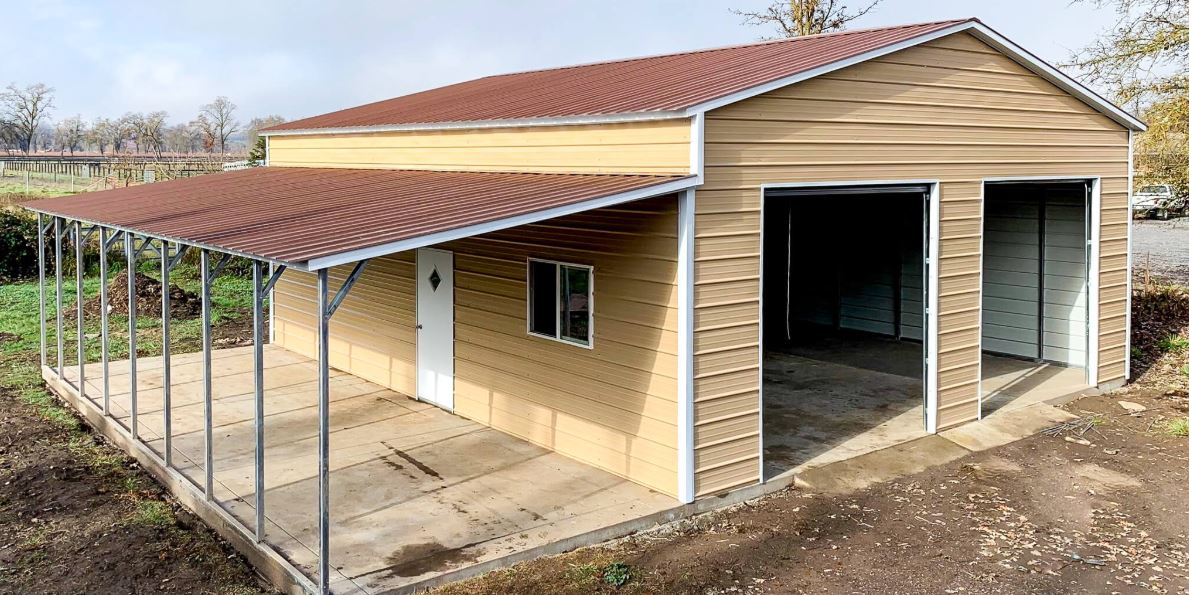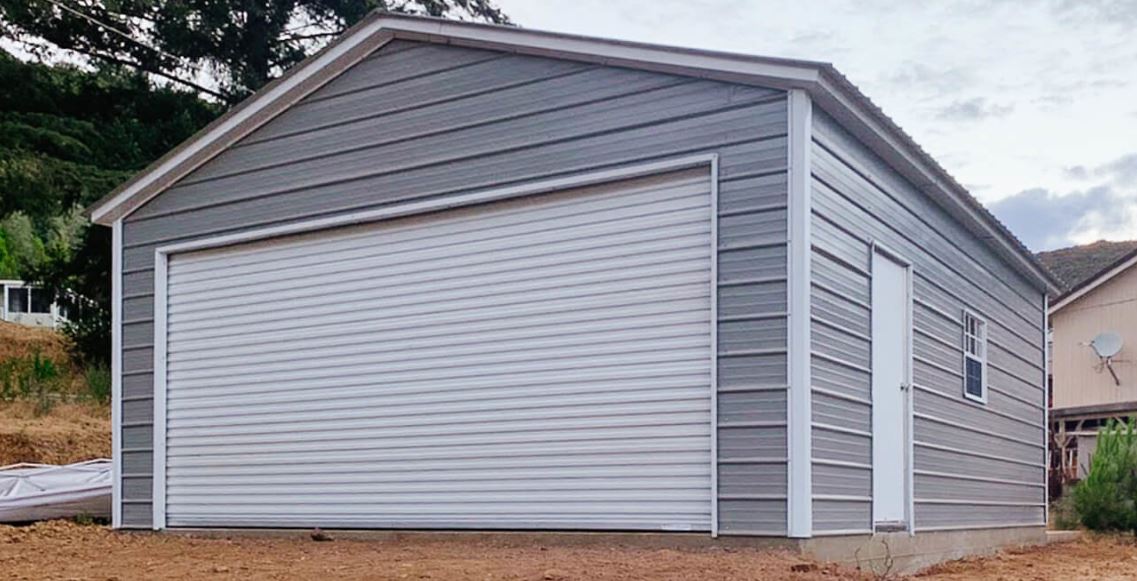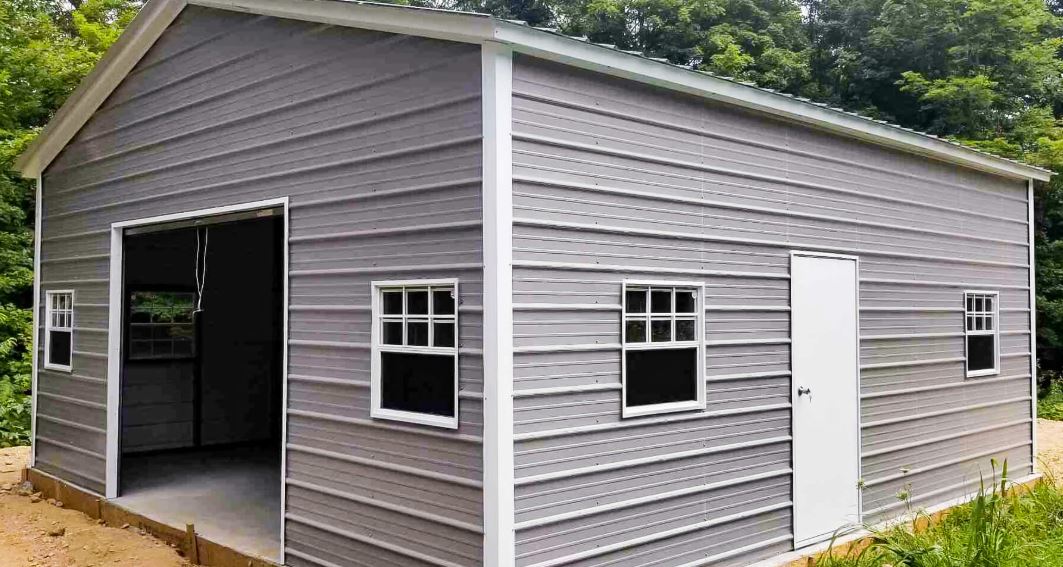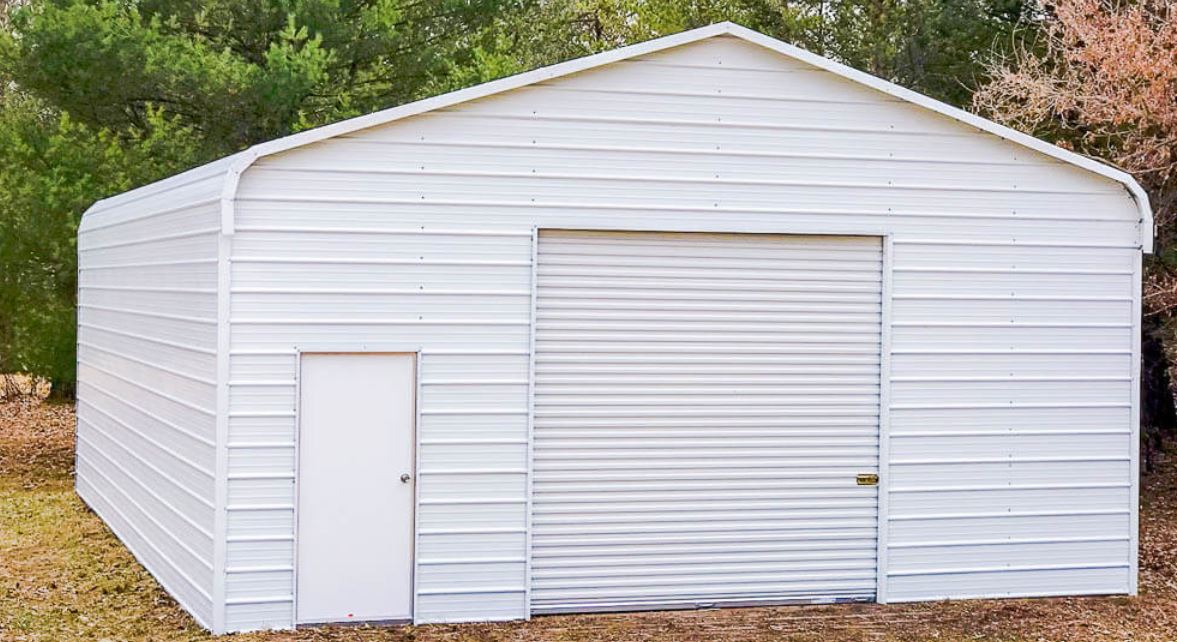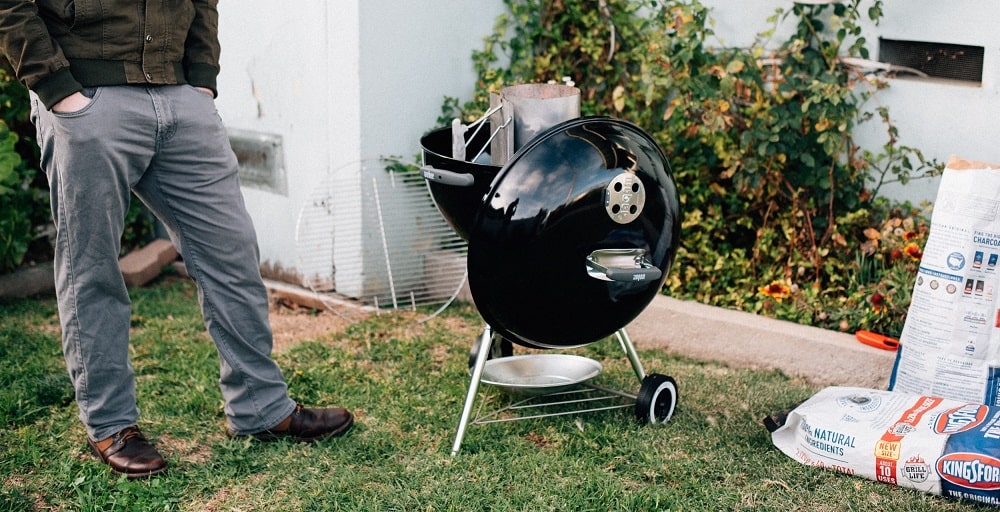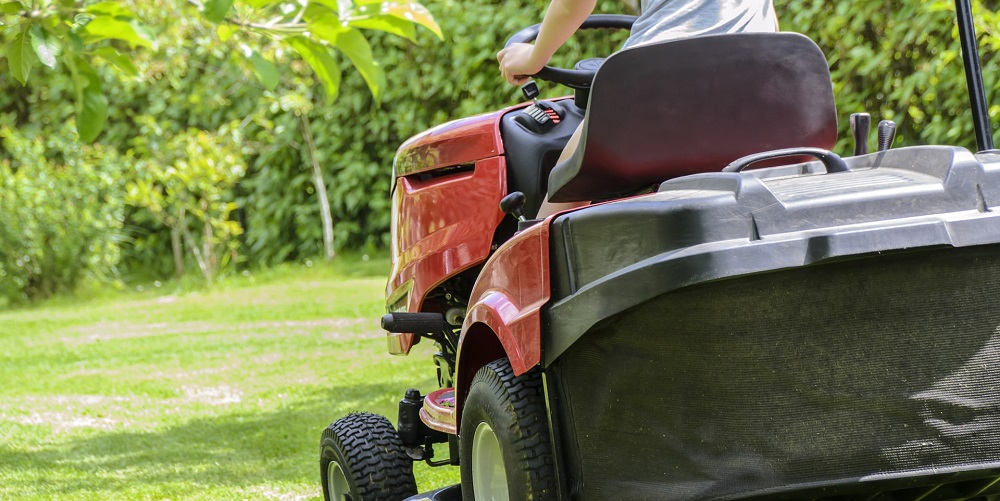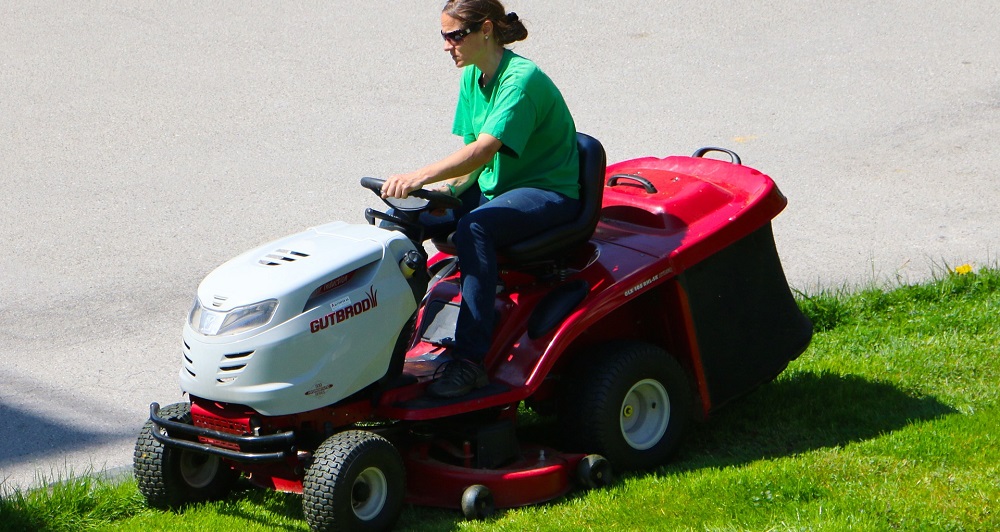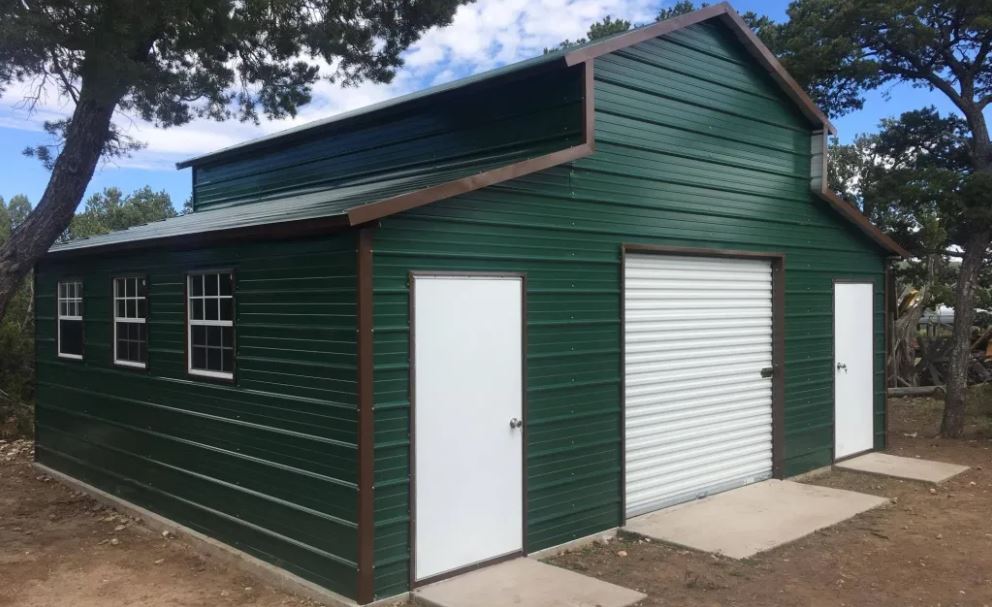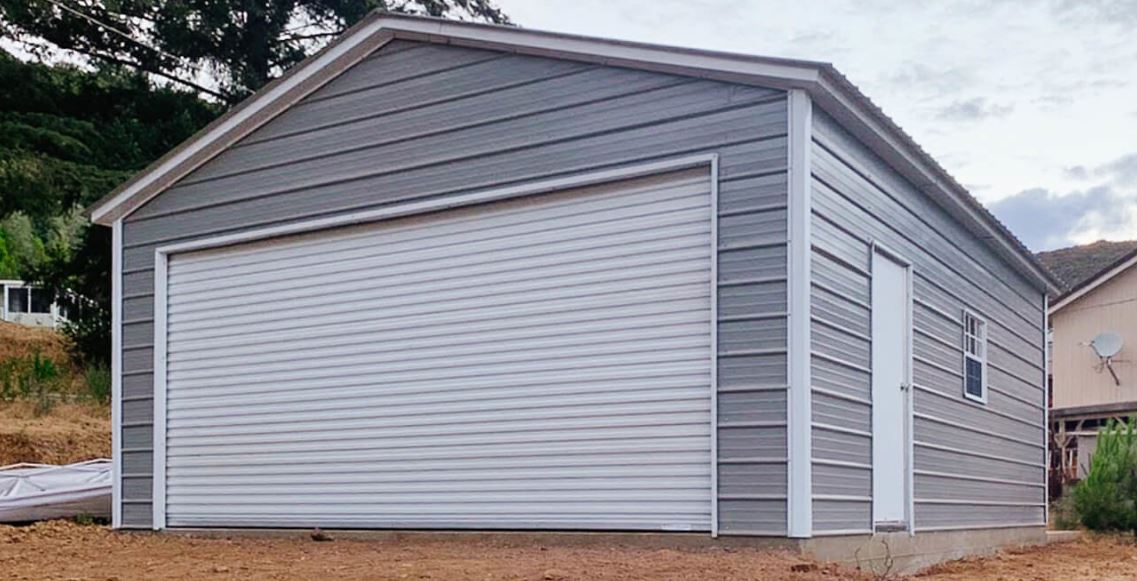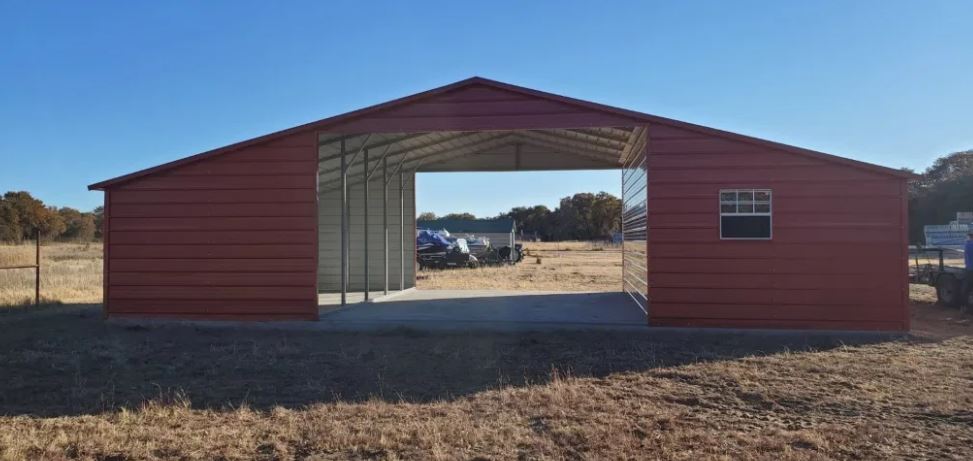
A set of patio furniture can help you enjoy the outdoor space around your home during the spring and summer months. But warm weather will eventually come to an end as the colder months creep in. Depending on where you live, keeping your patio furniture out in harsh winter conditions could damage it beyond repair. To ensure your outdoor furniture is in great shape for next spring, use this guide on how to store patio furniture for the winter.
American Steel Carports, Inc. has a variety of steel structures that are affordable, durable, and fully customizable! Use our Build & Price Tool to explore the many possibilities for your new building, and receive an instant quote!
Secure a Dry Location
Finding a dry location to store your patio furniture is crucial. If you happen to have space in your current garage, that would work nicely. Unfortunately, many people don’t have a garage. Or, if they do, there’s likely not enough room available for additional furniture. If putting your patio furniture in a garage is not an option for you, consider the following ideas that will keep your items dry throughout storage:
- A storage unit. You could rent a storage unit in a facility near your home to store your furniture and other items. This option will keep your belongings dry, but it does come with a significant expense. You may need to pay as much as $100 or more per month to rent a storage unit.
- Under a tarp. Rather than storing your furniture inside, you could gather it up on part of your property and place a tarp over it. A good tarp should keep everything mostly dry, but it won’t be the same as a roof. Also, it’s likely the little critters will make their way under the tarp to stay warm, so you might have quite a mess to clean up in the spring.
- In a detached structure. This option will provide the best results. Whether it is a small shed or a larger detached garage, a building with a roof and walls will offer the best protection for your patio furniture. Plus, you’ll be able to fit more in this space than just your patio furniture, so other valuable items can be stored here, as well.
If you build a metal structure for additional storage on your property, that decision will start to pay off in short order. Given the affordable nature of steel buildings and the expense of options like renting a storage unit, this is a financial decision that makes a lot of sense.
Preparing for Storage
Before you put your patio furniture away for the winter, there are a few tasks you can do to make sure it’s in great condition when you pull it out again. For starters, thoroughly wash the furniture according to the manufacturer’s directions. By washing away all of the dirt and grime that accumulated over the summer, you’ll protect the finish on all of your pieces.
If you wash your furniture, make sure it is allowed to fully dry before you stack it up and put it away. You don’t want to put away wet items, as this could allow mold or mildew to develop.
Work with American Steel Carports, Inc.!
We hope this guide on how to store patio furniture for the winter keeps your belongings in top condition. It would be a shame to have to replace your patio furniture because you left it out in the elements all winter long. With a little help from American Steel Carports, Inc., you can avoid that outcome without breaking the bank. Order one of our sturdy metal structures and have a dry place to keep your patio furniture, along with many other items, throughout the winter. Get started with the Build & Price tool today!

